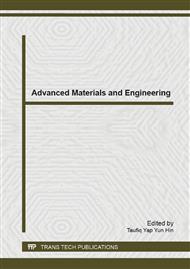[1]
Kolb, E.W. and M.S. Turner, 1994. The Early Universe. Westview Press, pp: 1-283.
Google Scholar
[2]
Guth, A., 1998. The Inflationary Universe. Basic, pp: 1-204.
Google Scholar
[3]
Turner, M.S., 2007. Quarks and the Cosmos. Science, 315: 59-61.
Google Scholar
[4]
Frieman, J., M.S. Turner and D. Huterer, 2008. Dark Energy and the Accelerating Universe. Annual Reviews of Astronomy and Astrophysics, 46: 385-432.
DOI: 10.1146/annurev.astro.46.060407.145243
Google Scholar
[5]
Barcelo, C., S. Liberati, S. Sonego and M. Visser, 2008. Fate of Gravitational Collapse in Semiclassical Gravity. Physical Review, 77(4): 271-279.
DOI: 10.1103/physrevd.77.044032
Google Scholar
[6]
Susskind, L., 2008. The Black Hole War: My Battle with Stephen Hawking to Make the World Safe for Quantum Mechanics. Little Brown, pp: 1-294.
DOI: 10.1063/1.3141946
Google Scholar
[7]
Shchigolev, B.M., 1954. Intermediate orbits in a three-body problem. Bul. Sternberg Astronomical Institute Moscow University, 2: 59-92.
Google Scholar
[8]
Hill, G.W., 1878. Researchesin the Lunar theory. Journal of Mathematics, pure and applied, 1: 25-33.
Google Scholar
[9]
Shchigolev, B.M., 1960. About intermediate orbit in Hill's three-body problem. Pub. Sternberg Astronomical Institute Moscow University, 28: 91-98.
Google Scholar
[10]
Shinibaev, M.D. et al, 1999. Elliptic type of body movement in second flat Hill's orbit. In the Proceedings of the 1999 Practical Conference"Auezov Readings-2", Shymkent, Vol. 2, pp: 112-115.
Google Scholar
[11]
Korn, Z.G. and T. Korn, 1970. Mathematical reference book for Scientists and Engineers. Moscow: Nauka, pp: 720.
Google Scholar
[12]
Aksenov, E.P., 1986. Special functions in celestial mechanics. Moscow: Nauka, pp: 320.
Google Scholar
[13]
Shinibaev, M.D., 2010. Translational-rotational motion of a rigid body in stationary and non-stationary Earth's gravity field. Almaty: Gylym, pp: 132.
Google Scholar


